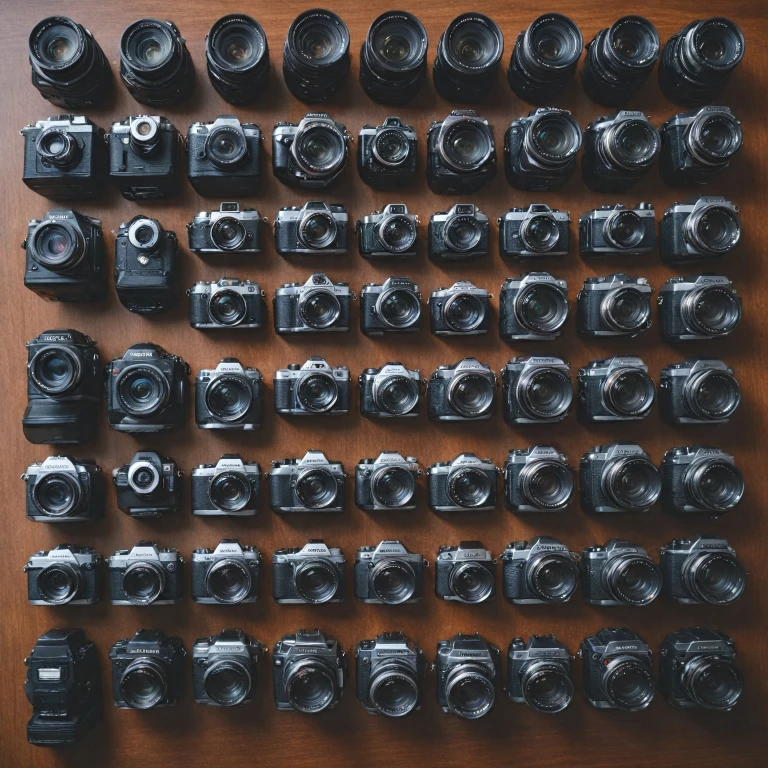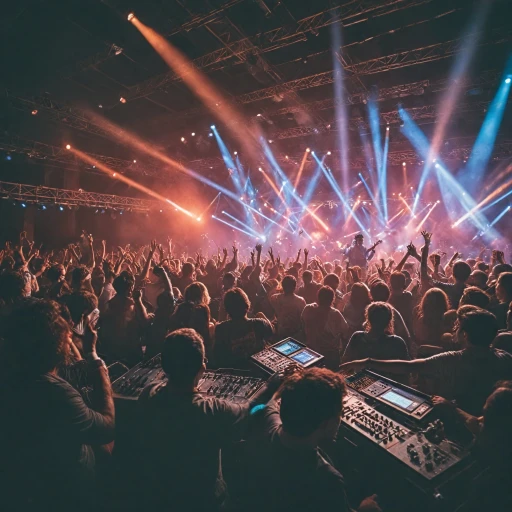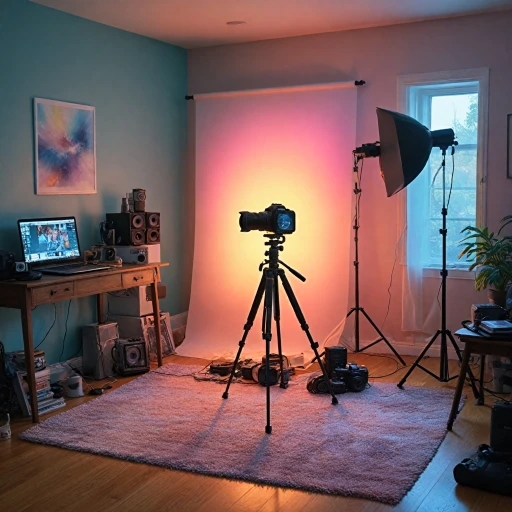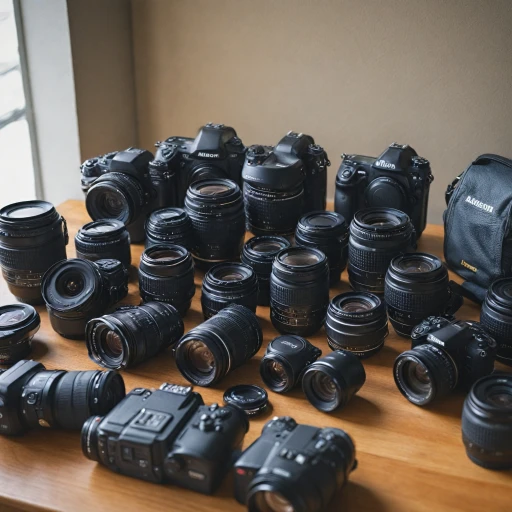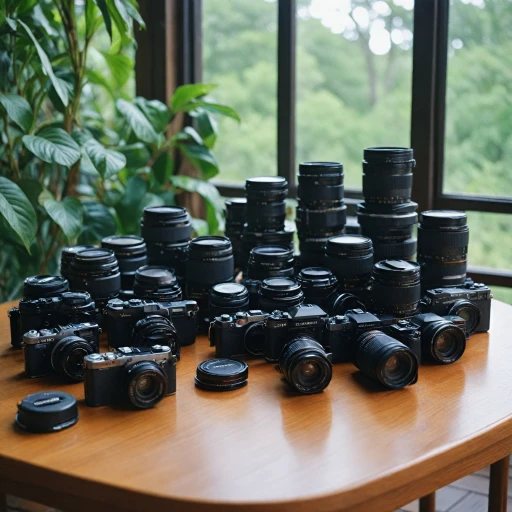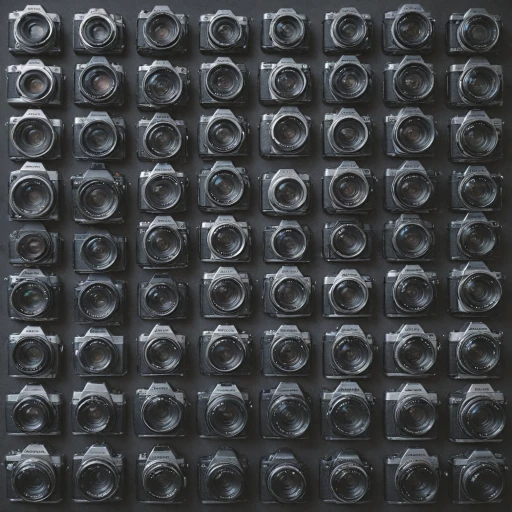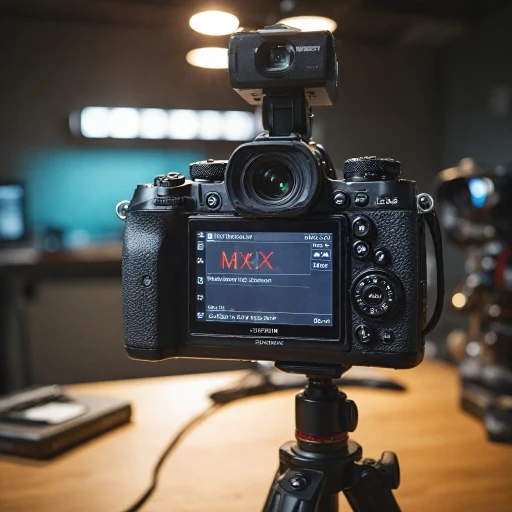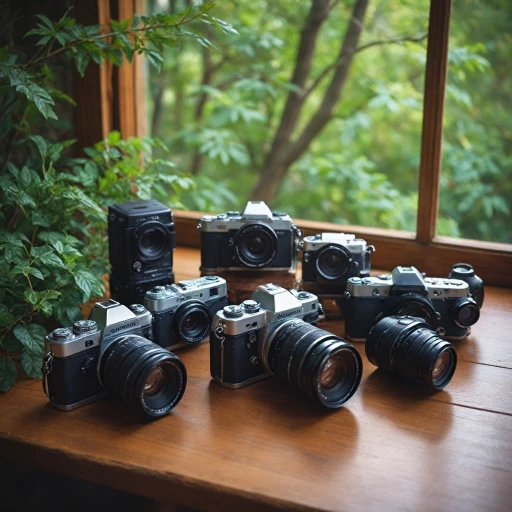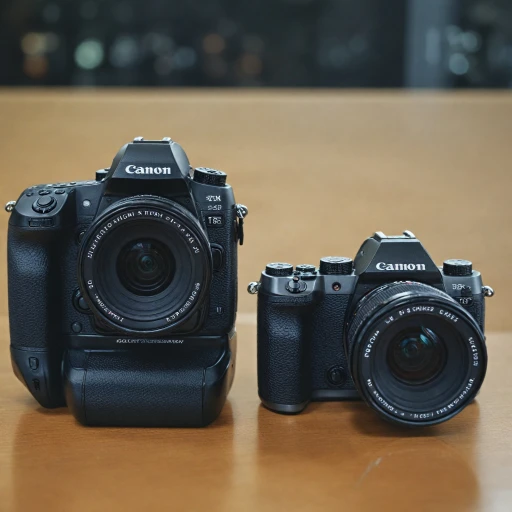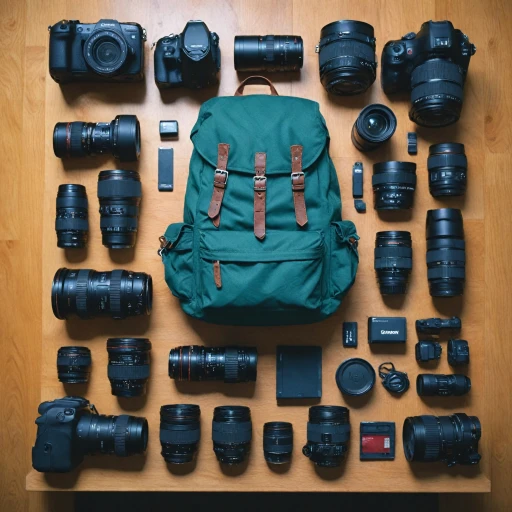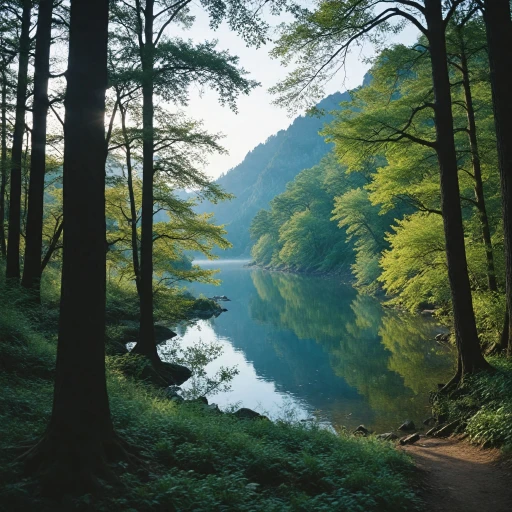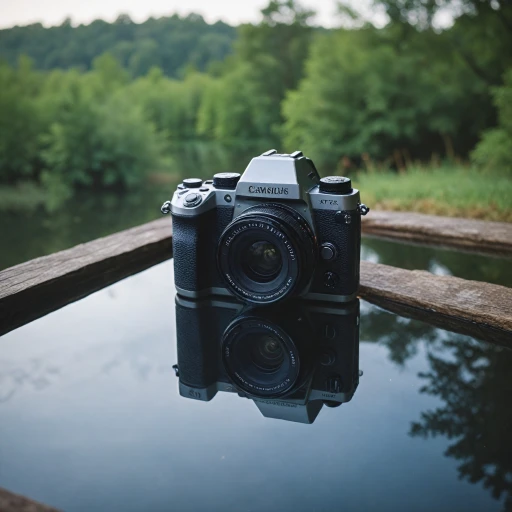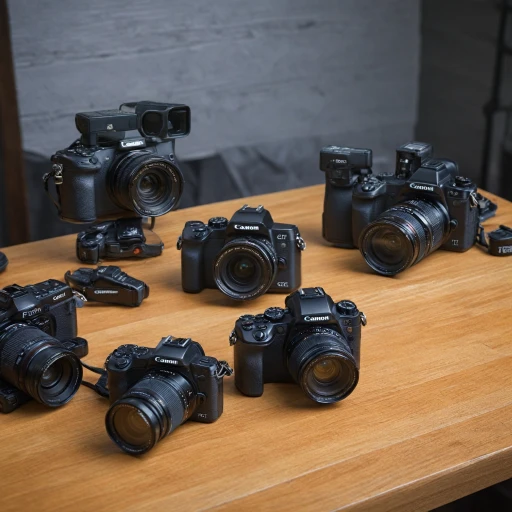
Understanding Mirrorless Technology
Exploring the Fundamental Technology Behind Mirrorless Cameras
In today's photography landscape, mirrorless cameras have emerged as a popular choice among both beginners and seasoned professionals. Understanding the technology behind these cameras can help you make an informed decision if you're considering buying one. Mirrorless cameras differ significantly from traditional DSLRs. They remove the need for a physical mirror that reflects the image into an optical viewfinder, resulting in a more compact design. Instead, they employ a digital sensor to capture images directly, which allows for a lighter and often more portable camera body. This sensor directly transfers the light to an electronic viewfinder or LCD screen. The absence of a mirror not only reduces the camera weight but also lessens the shutter speed lag associated with traditional DSLRs. This results in faster shooting speeds and provides photographers the edge they need when capturing dynamic scenes. A key benefit of mirrorless technology is its adaptability with different camera lenses. The focus on modularity means you can use various lenses across brands, assuming compatibility with the mount. Popular brands like Canon's EOS line and Sony's series have embraced the mirrorless concept, offering cameras that deliver exceptional image quality. When scouting for the best mirrorless option, quality and versatility are crucial, especially if you're interested in specific types of photography. The full frame sensor in some of these cameras delivers unparalleled image quality, making it ideal for professional assignments and hobbyists alike. As we dive deeper into key features and top mirrorless cameras for photographers, you might also want to explore more specific applications of these devices, such as their utility in bird photography Choosing the ideal mirrorless camera for bird photography. Mirrorless cameras are evolving rapidly, and understanding their technology can help ensure you're getting the most bang for your buck.Key Features to Consider
Key Factors to Prioritize in a Mirrorless Camera
When venturing into the realm of mirrorless cameras, it's essential to focus on several features that define the overall performance and versatility of your digital camera. Whether you're a photography newbie or a seasoned professional, certain elements make a significant impact on your shooting experience and the final image quality.
Image Quality and Sensor Size
The cornerstone of any excellent camera is its image quality, which is primarily determined by the sensor size. Full frame sensors, commonly found in higher-end models like the Canon EOS or Sony offerings, deliver superior image quality with enhanced depth and detail. On the other hand, APS-C and Micro Four Thirds sensors are popular choices for their balance of quality and affordability.
Lens Compatibility and Mount Options
Your choice of lenses can significantly influence your type of photography. Many cameras offer interchangeable lens options, which allow you to switch between various focal lengths and shooting styles. Understanding the camera mount system is crucial for ensuring compatibility with a diverse range of camera lenses, providing flexibility as you develop your skills.
Video Capabilities and Autofocus Performance
For creators interested in filming, video features are just as important as still shooting capabilities. Look for cameras offering high-resolution video capture, robust autofocus, and additional enhancements like in-body stabilization. Brands like Canon's EOS series and Sony's mirrorless cameras dominate with their best video performance, making them top choices when considering mirrorless video cameras for a $5000 budget.
Connectivity and Ergonomics
Modern mirrorless cameras often come equipped with Wi-Fi and Bluetooth features, allowing seamless transfer of images and videos to other devices. Additionally, consider the ergonomics of the camera body itself—hold it in your hands to see if it's comfortable to shoot with over prolonged periods, especially if you're planning extended photo shoots or vlogging sessions.
Design and Build Quality
A good camera can withstand various shooting conditions, so durability and build quality are key. Check for weather-sealed designs to protect against the elements, particularly if you frequent outdoor shoots or adventurous locations.
In conclusion, the right choice of a digital camera depends on understanding these features and how they align with your photographic needs. From sensor size and lens compatibility to video prowess, each factor contributes significantly to capturing high-quality images and videos.
Top Mirrorless Cameras for Beginners
Entry-Level Mirrorless Cameras for Budding Enthusiasts
Aspiring photographers stepping into the realm of mirrorless cameras may find themselves overwhelmed by the plethora of choices available. These digital cameras offer a seamless blend of compact design and DSLR-like image quality, enticing both beginners and seasoned pros alike. Sony Alpha a6000 One of the best options for newcomers is the Sony Alpha a6000, often praised for its bang-for-buck value. This camera combines fast autofocus, good image quality, and a user-friendly interface, making it ideal for those new to photography. Its lightweight body ensures ease of use during lengthy photo shoots. Canon EOS M50 Next, the Canon EOS M50 earns its place among top mirrorless cameras with a versatile feature set for all-around shooting. With a 24.1 MP APS-C sensor and the Digic 8 image processor, it provides remarkable image quality. The EOS M50 also supports 4K video, appealing to those interested in video content creation. Olympus OM-D E-M10 Mark III For those drawn to the aesthetics of retro design, the Olympus OM-D E-M10 Mark III fits the bill. Known for its in-body stabilization, it allows for crystal-clear images with minimal effort. Additionally, its intuitive interface helps beginners master the basics of photography without feeling overwhelmed. Fujifilm X-T200 If filmmaking interests you, the Fujifilm X-T200’s touch screen and excellent video quality may pique your interest. It stands out with its vibrant color reproduction, perfect for capturing stunning stills and videos. The X-mount adaptability to various lenses also makes it a versatile choice. These entry-level models demonstrate that you don’t have to compromise on quality even at the beginner level. As you refine your preferences and expertise, diving further into the world of lens options and advanced settings will open new creative possibilities. For a deeper dive into unique photography perspectives, explore the guide on the Mamiya 7.Advanced Options for Professionals
High-Performance Mirrorless Options for Experts
For experienced photographers and professionals, investing in advanced mirrorless cameras can significantly enhance image quality and overall photography experience. With options that push the boundaries of what is possible in digital imaging, choosing the right camera often revolves around specific needs such as shooting speed, lens compatibility, and video capabilities.- Most high-end mirrorless cameras feature full frame sensors, providing exceptional image quality and detail. This is particularly vital for those who engage in type photography that demands precision and clarity.
- Brands like Canon and Sony are at the forefront, offering flagship models like the Canon EOS R5 and the Sony A7R series. These cameras come packed with state-of-the-art features designed to cater to advanced photographers.
- Shooting flexibility is another critical aspect, with top models offering high shutter speed options. This is invaluable when capturing fast-moving subjects or when opting for point and shoot convenience.
- For professionals who often shoot videos, many of these cameras provide 8K or 4K video recording capabilities. Combined with top-notch in-body stabilization systems, they ensure smooth, high-quality footage that can compete with the best vlogging set-ups.
- Lens range and compatibility are other factors to consider. Mirrorless cameras offer a wide array of compatible camera lenses, providing flexibility whether you're looking for a versatile zoom lens or a specialized prime lens.
- Ultimately, when choosing a camera, factors like the camera mount type, bang buck value, and brand reputation can further guide your decision.
Comparing Popular Brands
Brand Comparisons: Canon vs. Sony vs. Olympus
When diving into the world of mirrorless cameras, understanding the strengths of each brand can significantly impact your decision. Canon, Sony, and Olympus are among the top contenders, each offering unique advantages for different types of photography.
Canon: A Legacy of Quality
Canon has long been a trusted name in the photography world, and their mirrorless cameras continue this tradition. The Canon EOS series, including the EOS Mark models, is renowned for its excellent image quality and robust build. Canon's full-frame mirrorless cameras are particularly favored by professionals who require high-resolution images and superior performance in low-light conditions. Additionally, Canon offers a wide range of lenses, making it a versatile choice for various shooting styles.
Sony: Innovation and Versatility
Sony has made significant strides in the mirrorless market, often leading the way with innovative features. Their cameras are known for exceptional video capabilities, making them a top choice for vloggers and videographers. Sony's mirrorless cameras, such as the Alpha series, offer fast autofocus and impressive image stabilization, which are crucial for capturing high-quality video and stills. The E-mount system provides a wide selection of lenses, catering to both amateur and professional photographers.
Olympus: Compact and Feature-Rich
Olympus stands out with its compact and lightweight designs, perfect for photographers who prioritize portability without sacrificing quality. The Olympus Mark series is celebrated for its in-body image stabilization and durable construction, making it a good camera for outdoor and travel photography. While Olympus may not offer as many full-frame options as Canon or Sony, their Micro Four Thirds system provides a good balance of performance and size.
Choosing the Right Brand for Your Needs
When deciding which brand to buy, consider your specific photography needs. If you prioritize video quality and innovative features, Sony might be your best bet. For those who value a wide range of lenses and a legacy of quality, Canon is a strong contender. Meanwhile, Olympus offers a compact solution for photographers who need a lightweight yet capable camera. Each brand has its strengths, so understanding these can help you make an informed decision that aligns with your photography goals.
Tips for Choosing the Right Camera
Finding the Perfect Camera for Your Needs
Selecting the right digital camera is not just about following trends; it's about finding an option that fits your specific needs. Here are some essential tips to guide you in making the best choice for your photography journey:- Identify Your Purpose: Are you planning to shoot professionally or is photography a hobby? For casual photographers, a point and shoot mirrorless camera might suffice. However, if you are aiming for more advanced type photography, consider a full frame option for enhanced image quality.
- Consider the Camera Type: Decide between a DSLR mirrorless and a standard model. While DSLR mirrorless cameras offer more compact options with high-quality outputs, they may not suit everyone's style or budget.
- Evaluate Lens Compatibility: Repurpose existing camera lenses if you're upgrading from a DSLR. Knowing the camera mount type ensures compatibility with your current lenses, saving you money and providing flexibility in your shoots.
- Understand Key Features: Pay attention to features like shutter speed, which affects how well you capture motion. Likewise, check video capabilities if you're interested in video production; some cameras are touted as the best vlogging cameras for their superior video quality.
- Explore Popular Brands: Familiarize yourself with market leaders such as Sony, Canon, and others. Each brand has its own strengths and weaknesses, influencing image quality and the overall user experience.
- Seek Expert Advice: Engage with a camera expert if you’re still unsure. They can provide personalized recommendations based on your needs, ensuring you get the most bang for your buck.
